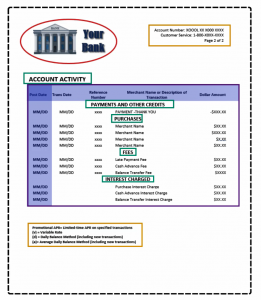A quick Google search for fully automated accessibility tools, those which remediate PDFs without human intervention, yields surprisingly few results. You might find some automated accessibility checkers or website accessibility plug-ins, but not much for PDFs. Why? Surely in this day and age there must be a plug-in that can tag PDFs in an instant without the need for human intervention, just like there are for websites. Unfortunately, there are two problems with that.
First, fully automated website accessibility plug-ins often aren’t as effective as they seem because they rely on coding, which may not be accurate. Second, automated software can only correctly identify objective information; it just guesses at any contextual elements. That’s why even automated PDF accessibility checkers miss as much as 70-80% of accessibility errors. They can tell you what elements are tagged, but they can’t tell you whether the tags are correct and how the element contributes to the content of the page.
As technology advances, the role that AI-powered automation can successfully play in accessibility grows. While there are no “out of the box” automated accessibility solutions that automatically produce accessible documents without any human input, humans can use AI to design automation to make accessibility much quicker and easier.
How can humans and machines work together now?
Images
 AI can correctly identify the presence of images and tag them. It can often roughly identify the subject of photos and illustrations. Facial recognition software has become sophisticated enough to identify individual people in an image. However, humans need to identify what’s actually happening in the image and why it’s significant. Are the people in the image happy, sad, or angry? Are they doing anything important that would be relevant to the rest of the information in the PDF? And the information AI can provide is often simplistic and is just a guess…. Incorrect information is just as inaccessible as no info at all.
AI can correctly identify the presence of images and tag them. It can often roughly identify the subject of photos and illustrations. Facial recognition software has become sophisticated enough to identify individual people in an image. However, humans need to identify what’s actually happening in the image and why it’s significant. Are the people in the image happy, sad, or angry? Are they doing anything important that would be relevant to the rest of the information in the PDF? And the information AI can provide is often simplistic and is just a guess…. Incorrect information is just as inaccessible as no info at all.
An image of a glowing jack-o-lantern on a front porch might be identified by AI as “this image may contain night and fire,” and a Starbucks logo may simply read “woman with long hair.” Neither of the descriptions are accurate portrayals of the significance of the image without a human providing it. Elements like graphs, charts, and diagrams can’t be described at all without the help of a human.
Headings
AI-powered automated accessibility can identify headings because their font size and weight are often different from other text in a document. It might also identify a skipped or out of order heading if the surrounding headings are tagged. However, humans need to review the heading structure to make sure they’re all tagged, that the content in each section makes sense, and fix any mis-tagged or skipped headings.
Reading order
AI can tag basic reading order if a document is set up in a standard, top-down, left-to-right format. However, humans need to set the reading order in documents such as brochures, articles, magazines, catalogs that have multiple columns. These documents can have text combined with images, and some are meant to be folded and read a certain way as they’re unfolded. Left-to-right, top-down reading order won’t work with such documents.
Complete automation
Under very specific, limited circumstances, humans can use AI to create completely automated accessibility programs to suit specific documents. When an organization produces lots of similarly-formatted documents that include similar elements, like meeting minutes or financial statements, humans can program machines to identify each element of these specific documents. Once developers “train” the program to correctly identify the elements, they create a digital template. The template contains carefully defined tags to prevent errors. The program applies the template to every subsequent document, creating accessible, ADA-compliant documents. This is known as batch processing.
Equidox automated accessibility… with help from the humans
Batch processing might seem deceptively simple; PDF remediation can’t be completely automated without human intervention, right? Batch processing provides automated accessibility, but not totally without human intervention. Instead of humans verifying tags at the end of the process, they do so at the beginning, building a template exclusively for one particular document format. Humans put significant work into building correct templates so the rest of the remediation process is simple and flawless. This process can be done on demand (such as when a customer requests a PDF copy of their bank statement), or it can be done all at once (such as an organization remediating historical archived reports).
Static Template Batch Processing
Static templating works for identically formatted documents in which only information within the tagged elements changes. For example, a company may have hundreds of archived employee applications that they need to remediate. Each element is identical in every application; the only variation is in the responses within those elements. The size, shape, and placement of each element does not change. Equidox can take one sample application, tag the elements, create a static template from those tags, and apply the tags to every subsequent application.
Dynamic Template Batch Processing
Equidox Custom Batch Processing works for repetitive, recurring documents with similar elements. Developers “train” machines to detect elements that use the same features to distinguish them using sample documents. Equidox uses the “trained” machines to build a dynamic template that detects those elements on all subsequent documents. For example, a bank’s statements may always use 16-point, bold, Arial font as the heading for the “charges” section, and place a thin black box around the section. Statements may have the customer’s name and address in the upper righthand corner, and the bank logo in the upper left. Machines recognize placement and style features for each element in every document, and tag them accordingly. Developers use a large sample of documents to make sure the machines identify elements correctly. This automated accessibility is only possible when all the documents use the same distinguishing features for all similar elements.
Dynamic template batch processing can be employed locally or on a cloud server and integrated into an existing production workflow. No documents or information need to leave the premises, so the process is as secure as your own production workflow. Because it can be integrated into an existing workflow, it’s ideal for producing on-demand accessible documents, like when customers click a link to download a PDF of their bank statement online. Batch processing provides automated accessibility by instantly remediating the statement.
Fully automated accessibility is possible for objective elements
If the only thing changing is the actual text- not the formatting of the document- custom automated accessibility solutions can create usable, ADA-compliant documents on demand. The Equidox artificial intelligence engine identifies and tags each section accurately because developers design templates specifically for each unique document using examples of those documents as templates. Machines can make PDF remediation significantly easier. When humans identify the visual elements like reading order and images and machines simply need to detect variations in text, AI can instantly automate PDF remediation.
Have questions about whether batch processing is right for your company? Ask us!




